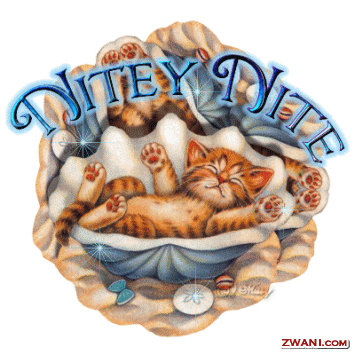GOOD NIGHT
Copy this code to your profile or website:
Copy this code to your profile or website:
Copy this code to your profile or website:
Copy this code to your profile or website:
Copy this code to your profile or website:
Copy this code to your profile or website:
Copy this code to your profile or website:
Creating a copy-design advertising concept that sells
Shaun Crowley
Freelance designers who produce marketing materials will know that design and copy should be developed together to work well.
But sometimes there isn’t enough budget for teaming with a copywriter. Or the client needs a project in a hurry. That’s when being able to produce concept and copy in addition to design can be a powerful business advantage.
It goes without saying that an ability to write is fundamental. But you don’t have to be a copywriter to produce strong concepts and write copy for many smaller projects.
Think of the concept as a hook, a lead-in that will grab readers’ attention and persuade them to read on. Think of the copy as a fulfillment of the concept’s premise, the fleshing out of the product story.
Avoid trying to do too much, bombarding readers with multiple copy and visual messages. For any piece to be persuasive and memorable, its design, headlines, visuals, and copy must work together to communicate one single and strong message.
As idea starters, below are thirteen simple concept/copy approaches. Each has been proven to help deliver sales results.
1. Focus on a particularly persuasive benefit.
This is a fail-safe approach to communicating the product message in advertising. Brainstorm a list of product benefits and focus on the benefit your reader will find most appealing.
Product: Beds. Headline: “Turn your back on aches and pains”. Visual: Profile of woman, back to camera, lying comfortably on a mattress.
2. Create a need—then show how the product fulfils it.
A proven way to position a product is to show how it solves a need or a problem. The problem can be real…
Product: Kitchen appliances. Message: “Everyone knows showers are more efficient than baths. So why do dishwashers work like baths?” Visual: Photo of shower cubicle alongside product.
Or the problem can be imagined…
Product: Teaching (recruitment drive). Headline: “Children have an energy and spontaneity that just aren’t found in many office jobs”. Visual: Happy child contributing in a classroom activity.
3. Focus on the product’s Unique Selling Point.
The product you’re selling doesn’t need to fill an obvious gap in the market to have a Unique Selling Point (USP).
A USP can be a fact about the product (such as sales history, brand reputation, or product origination)…
Product: Muesli. Headline: “The original Swiss muesli”. Visual: Idyllic Swiss landscape.
A USP can be a product feature (something the product has that no other product has)…
Product: TV. Headline: “Color like no other.” Visual: Bright-colored paint splashing across a television set.
Or a USP can be a product benefit (something a product does that no other product does)…
Product: Educational text book. Headline: “At last, a coursebook that puts you in control of your lessons”. Visual: confident looking teacher walking into the classroom..
4. Associate the product with a connected idea, feeling, or emotion.
Metaphor is commonly used in consumer advertising, corporate-identity, and brand-building publicity. It can be particularly effective in activating an archetype that connects an emotion with the brand.
Product: Cognac. Headline: “Let the conversation flow”. Visual: Glass of cognac in focus; a group of people in conversation after dinner out of focus.
5. Prove how popular the product is.
People trust popular products because they are seen as reliable and imply good quality. Popularity messages also respond to deep emotional needs to feel part of a community.
Product: Telecommunications. Headline: “Thousands of people are coming back to XYZ Telecoms”. Visual: Woman opening door to friendly telecoms engineer.
6. Use a case study.
Case studies prove validity by showing how people have already benefited from the product in the past. They are particularly useful for highlighting success stories, before-and-afters, or for demonstrating the versatility and universality of the product.
Product: Weight-loss milkshake. Headline: “I lost 18 pounds in just one month on the ThinQuick Plan!” Visual: Before and after photos of individual alongside close-up of product.
7. Endorse the product.
People trust respected figures in society. Your lead copy could be a published testimonial—or have the client pay a respected figure to put his/her name to the product.
Product: Rowing machine. Headline: “The Gold Standard”. Visual: Snapshot of Olympic rower presenting product, with his signature.
8. Tell the product’s story.
A product with an interesting background has real news value, and news makes for an attention-grabbing message, appealing to the reader’s sense of curiosity. Product stories can also initiate desire for the product by developing the reader’s emotional attachment to the brand.
Product: French Beer. Headline: “When Edmund Willims created Bertillon Noir, he didn’t just break the mould. He broke the law.” Visual: Melodramatic black-and-white photo of character nervously hiding behind a door.
9. Put the product to the test.
You can ‘test’ the product to highlight its key features such as convenience, strength, versatility—or to show how the product compares with the competition.
Product: Battery. Headline: “Duromax lasts up to three times longer than conventional alkaline batteries”. Visual: Battery-powered toy rabbit beating his competitors in a race.
10. Announce something new.
The word ‘New’ is one of the most powerful words in advertising copy. Sometimes the most effective message is simply to announce the product’s newness.
Product: Cat food. Headline: “Introducing new finest cuts from Feleba”. Visual: Plate of gourmet cat food hidden by a silver cover.
11. Guarantee the product.
A guarantee quickly dissolves any scepticism your reader has about the reliability of the product. Guarantees can be based around results, quality, durability, strength, customer satisfaction, a commitment on behalf of the company, fixed price promises, and lowest price claims.
Product: Golf clubs. Headline: “Guaranteed! Cut six to eight strokes off your game… or your money back!” Visual: Product photo overlaid with guarantee stamp.
12. Announce how much and where to buy.
If the product is particularly good value for money, you can’t go wrong with “the three Ps”: show the Product, show the Price, and show where to Purchase.
Product: Clothes. Headline: “Back-to-school sweat-shirts from just $4. at Berkleys (opposite MacDonalds)”. Visual: Photo of mothers and children choosing sweatshirts in-store, with map of where the shop is.
13. State the offer.
People are always looking for a bargain, which is why the word ‘Free’ is another powerful word in the advertiser’s lexicon. If you have a good offer to tell readers about, lead with it.
Product: Newspaper. Headline: “Get a free Mozart CD in tomorrow's Sunday Bugle”. Visual: Huge ‘FREE’ flash alongside product.
This list of advertising concepts is hardly exhaustive, but can be used as a framework for brainstorming ideas. Whatever your concept, ask yourself this: “Am I effectively communicating the product message through my headline, visual, and body copy?” If you’re not, the chances are your concept is too complicated—you need to strip it down and focus on just one thing.
Shaun Crowley is author of 100 Copywriting Tips for Designers and Other Freelance Artists, available at www.copywriting-designers.com

Copy this code to your profile or website:
Copy this code to your profile or website:
Copy this code to your profile or website:
Copy this code to your profile or website:
Copy this code to your profile or website:
Copy this code to your profile or website: